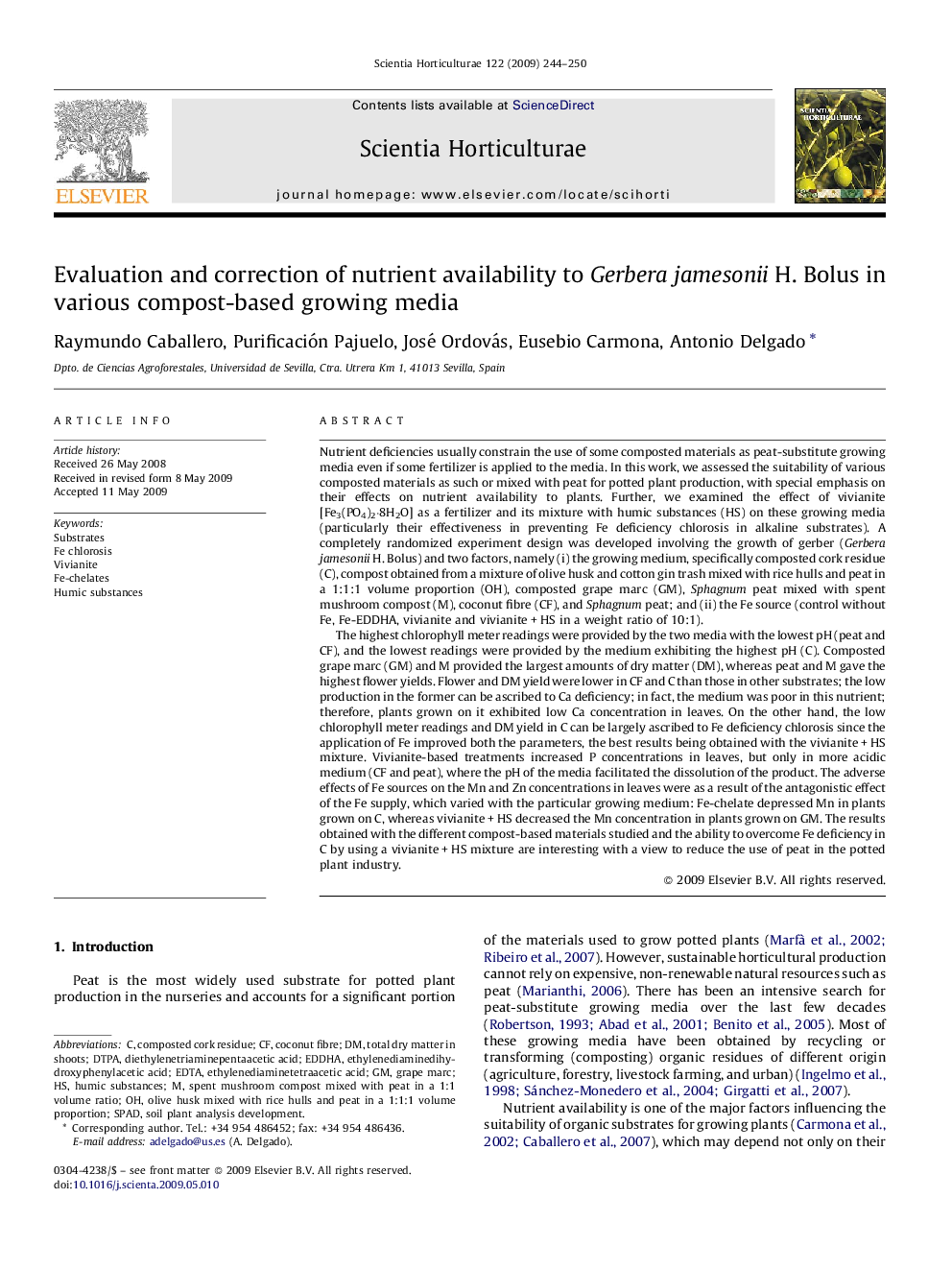| کد مقاله | کد نشریه | سال انتشار | مقاله انگلیسی | نسخه تمام متن |
|---|---|---|---|---|
| 4569026 | 1331321 | 2009 | 7 صفحه PDF | دانلود رایگان |

Nutrient deficiencies usually constrain the use of some composted materials as peat-substitute growing media even if some fertilizer is applied to the media. In this work, we assessed the suitability of various composted materials as such or mixed with peat for potted plant production, with special emphasis on their effects on nutrient availability to plants. Further, we examined the effect of vivianite [Fe3(PO4)2·8H2O] as a fertilizer and its mixture with humic substances (HS) on these growing media (particularly their effectiveness in preventing Fe deficiency chlorosis in alkaline substrates). A completely randomized experiment design was developed involving the growth of gerber (Gerbera jamesonii H. Bolus) and two factors, namely (i) the growing medium, specifically composted cork residue (C), compost obtained from a mixture of olive husk and cotton gin trash mixed with rice hulls and peat in a 1:1:1 volume proportion (OH), composted grape marc (GM), Sphagnum peat mixed with spent mushroom compost (M), coconut fibre (CF), and Sphagnum peat; and (ii) the Fe source (control without Fe, Fe-EDDHA, vivianite and vivianite + HS in a weight ratio of 10:1).The highest chlorophyll meter readings were provided by the two media with the lowest pH (peat and CF), and the lowest readings were provided by the medium exhibiting the highest pH (C). Composted grape marc (GM) and M provided the largest amounts of dry matter (DM), whereas peat and M gave the highest flower yields. Flower and DM yield were lower in CF and C than those in other substrates; the low production in the former can be ascribed to Ca deficiency; in fact, the medium was poor in this nutrient; therefore, plants grown on it exhibited low Ca concentration in leaves. On the other hand, the low chlorophyll meter readings and DM yield in C can be largely ascribed to Fe deficiency chlorosis since the application of Fe improved both the parameters, the best results being obtained with the vivianite + HS mixture. Vivianite-based treatments increased P concentrations in leaves, but only in more acidic medium (CF and peat), where the pH of the media facilitated the dissolution of the product. The adverse effects of Fe sources on the Mn and Zn concentrations in leaves were as a result of the antagonistic effect of the Fe supply, which varied with the particular growing medium: Fe-chelate depressed Mn in plants grown on C, whereas vivianite + HS decreased the Mn concentration in plants grown on GM. The results obtained with the different compost-based materials studied and the ability to overcome Fe deficiency in C by using a vivianite + HS mixture are interesting with a view to reduce the use of peat in the potted plant industry.
Journal: Scientia Horticulturae - Volume 122, Issue 2, 17 September 2009, Pages 244–250